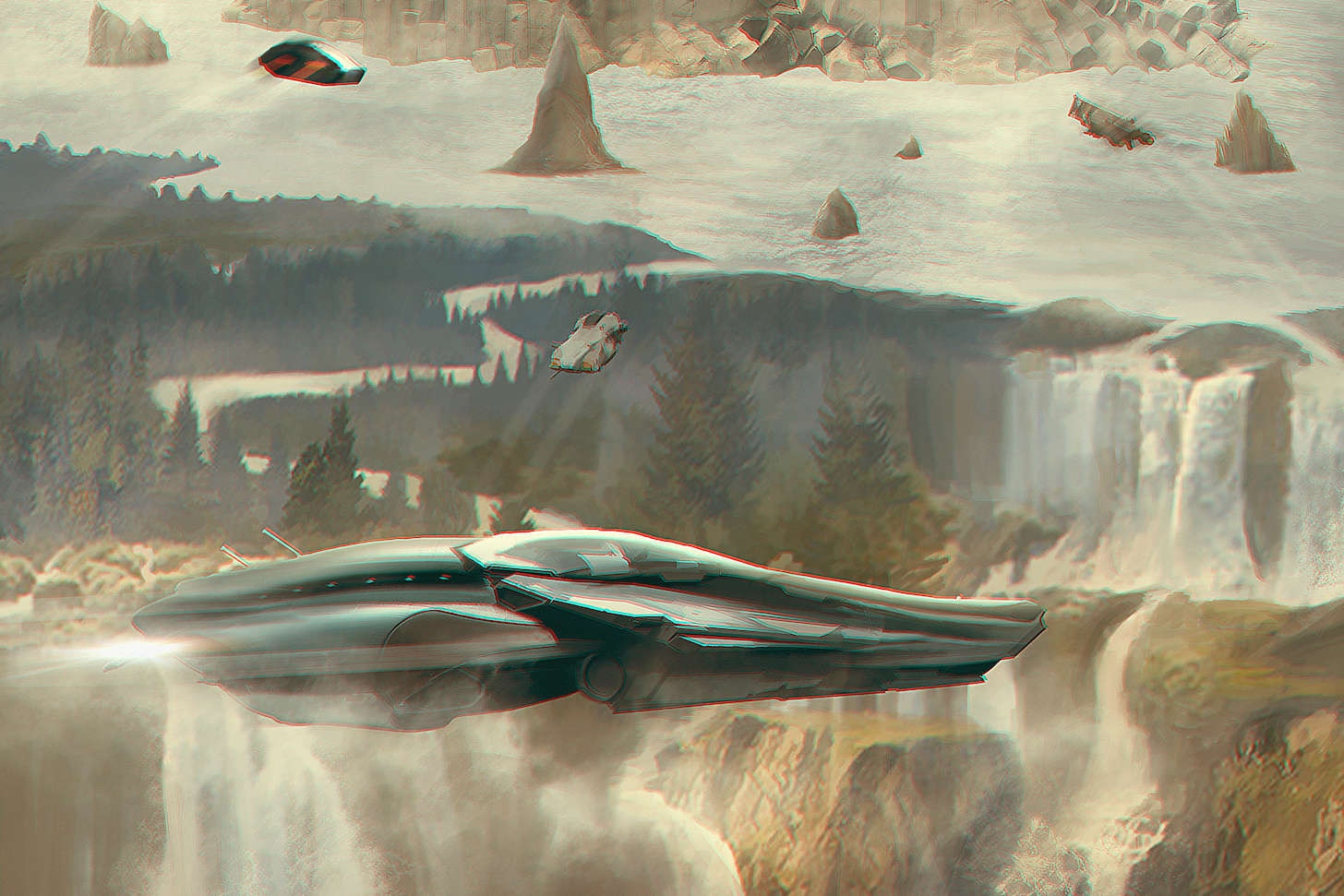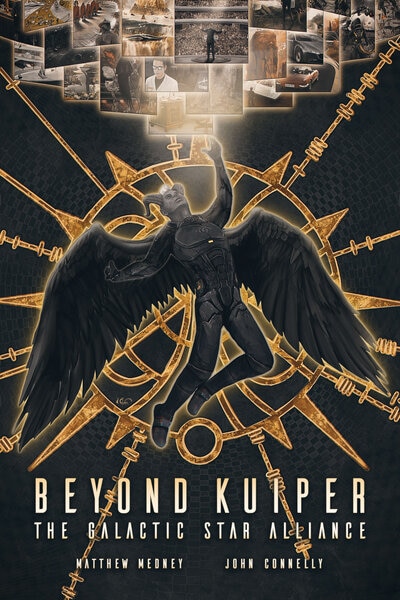Create a free profile to get unlimited access to exclusive videos, sweepstakes, and more!
'Bleeding-edge science fiction' book Beyond Kuiper has a Heavy Metal edge

Before Star Wars there was Heavy Metal. In the spring of 1977, the adult-oriented science fiction and fantasy magazine changed genre — and the way fans perceived genre. Before the terms "grimdark" existed in the fan nomenclature or cyberpunk was really solidified as an aesthetic, the stories and art of Heavy Metal presented a side to science fiction that was anything but kids' stuff. Although the magazine is called Heavy Metal, the relationship that it had to the mainstream of sci-fi was probably closer to punk rock.
Now, Heavy Metal has been reborn as a print magazine once again. In early 2020, Matthew Medney took over as the new CEO, hoping to not only reassert the magazine's cult dominance in genre circles but also help transport the brand into the mainstream. But... before all that happened, Medney had an idea for his own science fiction novel. Along with his collaborator John Connelly, Mendey crafted the novel Beyond Kuiper, the first book in a 10-part series called The Galactic Star Alliance. This novel will come out on Now. 24 and will be published by Heavy Metal's new publishing initiative. Without spoiling the book, the story has an old-school space opera flavor, but with a no-holds-barred approach towards alien life. The book's tagline says "There is no Drake Equation," referencing the mathematical theory that casts serious doubt on any human contact with aliens. Set in a far-future, with mind-bending plot twists, Beyond Kuiper is also lushly illustrated by Utku Özden, giving the novel the feeling of Heavy Metal's iconic aesthetic, but also offers a different experience than other books have.
SYFY WIRE caught up with Medney and Connelly, who answered questions as a pair via email, to talk about the book, and to ask Medney — the current boss of Heavy Metal — where the sci-fi genre is headed.
Which came first, the deal to take on Heavy Metal or this novel?
Beyond Kuiper is our firstborn. We incepted the idea for Kuiper in 2015 and have been crafting it ever since.
The novel mentions a backstory in which the U.S. gives up its sovereignty to a global government. This is interesting stuff, and common in old sci-fi novels. BUT, it feels more relevant these days. How are the concepts of World War III and a global Earth different in sci-fi now than, say, in the '70s?
It's interesting, because during the Cold War, there were the nukes, and there still are the nukes. Lots of them, being outfitted into deadlier delivery methods, like hypersonics. But their existential fear seems to have diminished in our time, even as the threat hasn't. We think people looked at human nature for violence to be what destroyed us. But now we realize that we are already destroying ourselves, and the planet. But everything is coming undone slowly, and painfully. And we can feel it. We think the idea of a global Earth then was about dystopia and utopia, and how unifying the world could get us safely past the bombs, but at what cost. Now we think of WWIII as a probable byproduct of an overpopulated Earth and the idea of a global world is the yearning hope to get our act together and limit global warming before it is too late.
There's a touch of throwback sci-fi to the prose and structure of the book? Were you influenced by anyone in particular?
Most definitely, Frank Herbert and Dune started it all, there's Ray Bradbury, Edgar Rice Burroughs, Orson Scott Card (Ender's Game), H.G. Wells, and especially Harlan Ellison. The fully formed worlds that man could craft in a short amount of pages is incredible. Others that have clearly influenced are [J.R.R.] Tolkien and [J.K.] Rowling with the depths of the worlds they created. We would also like to include a more recent author to that list Pierce Brown. We could not put the Red Rising series down. But truth be told, there are many throwback and classic science fiction authors, the greats like Isaac Asimov, Alistair Reynolds, and Philip K. Dick.
There are some jokes between characters about "early 21st-century comic book characters." Do you think Iron Man and Captain America will last into the next century?
Batman and Superman have existed for more than 80 years, and remain prominent figures in pop culture. Our story is barely 70 years in the future, I certainly see Iron Man and Captain America lasting just as long. They are symbols of the power of technology and how even the most loyal soldier should question their system. I think those are enduring ideas.
Matt, you once described the new Heavy Metal as "the bleeding edge of sci-fi and fantasy." Is this novel close to that bleeding edge?
We do believe this novel is close to that "bleeding edge." We portray many applications of sci-fi that are currently transitioning out of fiction today, like fusion, graphene structures, and vertical rocket landings, and in our story characters grapple with uncharted, emerging technologies and the dangers they could unleash. The level of additional information and art, and how it is presented, is different than anything I have seen. Science often starts out as fiction, and the difference between fantasy sci-fi and the bleeding edge is whether or not the applications are feasible in this century. Our technology throughout the book is bleeding-edge science fiction.
Beyond Kuiper is out from booksellers on Nov. 24, 2020. Subsequent installments of The Galactic Star Alliance will be published every 18 months.















